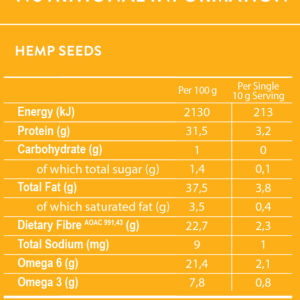Umuthi Botanicals – Chinese Cabbage Sprouting Seeds 50g
R55.50
Brassiica Rapa Subspecies Chinensis – Natural & Untreated
Out of stock
Description
**Chinese Cabbage Nutritional Facts:**
Chinese cabbage, also known as Napa cabbage, is a nutritious leafy vegetable widely used in Asian cuisine. Both Chinese cabbage sprouts and microgreens offer a mild, crisp flavor and various health benefits. Here are some key nutritional facts about Chinese cabbage:
– Vitamins and Minerals: Chinese cabbage is rich in vitamins A, C, and K. It also contains minerals like calcium, potassium, and manganese.
– Antioxidants: It contains antioxidants, including beta-carotene and flavonoids, which help protect against oxidative stress and support overall health.
– Fiber: Chinese cabbage is a good source of dietary fiber, promoting healthy digestion and aiding in weight management.
– Low in Calories: Chinese cabbage is low in calories and can be a great addition to a balanced diet for those watching their calorie intake.
**Health Benefits of Chinese Cabbage:**
Including Chinese cabbage sprouts or microgreens in your diet can provide several health benefits, such as:
– Digestive Health: The fiber content in Chinese cabbage promotes regular bowel movements and supports a healthy digestive system.
– Heart Health: Chinese cabbage is low in saturated fat and cholesterol, making it beneficial for heart health.
– Immune Support: The vitamin C content in Chinese cabbage helps support a healthy immune system and protects against infections.
– Anticancer Properties: Some compounds found in Chinese cabbage, such as glucosinolates and indole-3-carbinol, have been linked to potential anticancer effects.
– Hydration: Chinese cabbage has a high water content, which aids in hydration and contributes to overall well-being.
**Chinese Cabbage Sprouting:**
– Germination Length: Chinese cabbage seeds typically germinate within 4 to 6 days.
– Optimal Temperature: The ideal temperature for sprouting Chinese cabbage seeds is between 65°F (18°C) and 75°F (24°C).
Instructions for growing Chinese cabbage sprouts:
- Rinse the Chinese cabbage seeds thoroughly under running water.
- Place the seeds in a sprouting tray or a wide-mouthed jar covered with a mesh or cheesecloth. Add enough water to cover the seeds.
- Soak the seeds in water for about 6-8 hours.
- After soaking, drain the water from the tray or jar and rinse the seeds again.
- Tilt the tray or jar at an angle to allow excess water to drain out while still providing airflow.
- Rinse the seeds twice a day, making sure to drain out all excess water.
- Keep the sprouting tray or jar in a well-ventilated area away from direct sunlight.
- Continue rinsing and draining the seeds twice a day until they have sprouted and developed small leaves.
- Once the sprouts have reached the desired length (around 2-3 inches), they are ready to be harvested.
- Rinse the sprouts one final time before consuming. Store them in the refrigerator and consume within a few days for the best quality.
**Chinese Cabbage Microgreens:**
– Germination Length: Chinese cabbage microgreens typically germinate within 3 to 5 days.
– Optimal Temperature: The ideal temperature for growing Chinese cabbage microgreens is between 65°F (18°C) and 75°F (24°C).
Instructions for growing Chinese cabbage microgreens:
- Fill a shallow tray or container with a well-draining growing medium, such as potting soil or coco coir.
- Moisten the growing medium with water, ensuring it is evenly moist but not overly saturated.
- Sprinkle Chinese cabbage seeds evenly over the surface of the growing medium. Press them gently into the soil without burying them too deep.
- Place the tray in a warm and well-lit area, away from direct sunlight initially.
- Cover the tray with a lid or plastic wrap to create a humid environment for the seeds to germinate.
- After 2-3 days, once the seeds have germinated, remove the cover and move the tray to a well-lit area or provide artificial light using grow lights.
- Water the microgreens regularly, keeping the growing medium moist but not waterlogged.
- After 10-14 days, when the microgreens have reached a height of 2-3 inches and developed their first set of true leaves, they are ready to be harvested.
- Use a pair of clean scissors to cut the microgreens just above the soil line. Rinse them gently before consuming or storing in the refrigerator.
Remember to maintain cleanliness and hygiene during the growing process, including using clean equipment, washing hands before handling seeds and sprouts, and regularly sanitizing the growing trays.
The contents of the Knysna Health website shall not be regarded as medical advice, or a basis from which to make medical decisions. The use of information found on this site is completely your responsibility and at your own risk. Our recommendation is that if you have health concerns that you feel unsure about how to deal with, that you contact your trusted health professional for personalized advice.






Reviews
There are no reviews yet.